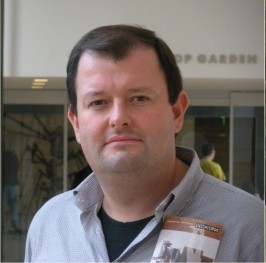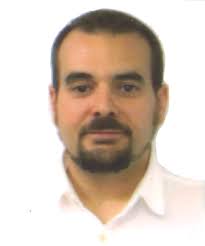Computational methods for Protein Function Prediction
Dr. Giovanni Minervini and Dr. Damiano PiovesanUniversity of Padova
Part I:"Bioinformatic methods for large scale automatic protein annotation"
The course is intended to provide an overview on the main computational techniques representing the state of the art in the field of automatic protein function annotation. Protein function annotation represents one of the most critical problem in the genomic era. When the sequence of a given given gene or protein is known, identifying the correct function entails expensive and time consuming experiments. Automatic computational methods represent the only possible solution to keep the pace of the new fast sequencing techniques. By this, recently an entire community of scientists has recognized the need of evaluating the accuracy of existing methods and has developed the Critical Assessment of Function Annotation experiment (CAFA, http://biofunctionprediction.org).
As an expert in the field, as proven by the very good performance obtained by my methods in the last CAFA editions, I would propose a course related to the following topics. The course will be organized in 10 hours of lectures plus 10 hours of practicals in the computer room.
The course will covers the following topics:
- Biological ontologies and annotation databases, with a particular focus to the Gene Ontology and its structure and topology. [1]–[4]
- Transfer by homology annotation. The virtues and vices of using standard algorithms and procedures. [5]–[10]
- Large scale automatic function annotation. An overview of the state of the art methods plus detailed examples of effective implementations. [11]–[15]
- Case studies [16]
The practicum teaching will highlight effective strategies to retrieve and collect annotation data from the principal biological databases. In particular, it will be shown how to solve this problem from different environments: the web interface, the command line and Python scripts. According to the programming skill level of the students the practicum could also covers some programming examples to develop basic function predictors.
Lectures:
- Biological ontologies and annotation databases, with a particular focus to the Gene Ontology and its structure and topology.
- Transfer by homology annotation. The virtues and vices of using standard algorithms and procedures.
- Large scale automatic function annotation. An overview of the state of the art methods plus detailed examples of effective implementations.
- Case studies.
Part II: “Recent advances in structural bioinformatics”
The course is intended to provide an overview on the main computational techniques representing the state of the art in the field of structural bioinformatics. In particular, it deals with generalizations about biological macromolecular 3D structure (i.e. three-dimensional structure prediction), comparisons of overall folds and analysis of local functional motifs, structure/function relationships, as well as principles of molecular evolution. Proteins function analysis (i.e. mutation effects interpretation) represents one of the most challenging problem in the post-genomic era, due to an increased availability of genetic data not balanced by a slow experimental functional interpretation. In this scenario, computational methodologies represent the possible solution to take advantage of new fast sequencing techniques.
To achieve this goal, international scientists community has developed several Critical Assessment competitions such as the CASP (Critical Assessment of protein Structure Prediction) http://predictioncenter.org/ and CAGI (Critical Assessment of Genome Interpretation) https://genomeinterpretation.org/.
As an expert in the field, I would propose a course related to the following topics. The course will be organized in 10 hours of lectures plus 10 hours of practicals in the computer room.
The course will covers the following topics:
- Proteins structure prediction, with a particular focus to the homology modeling (1, 2) and ab initio (3-5)structure prediction.
- Linear motifs (6-8) and intrinsically unfolded proteins. (9-11)
- Prediction of non globular proteins (12, 13) and their characterization (14).
- Mutations effect prediction (15, (16)
- Case studies (9)
The practicum teaching will present effective strategies to analyze unannotated proteins, starting from structure prediction to function recognition and prediction of mutations effect. In particular, case studies will show how to manage non globular proteins (i.e. repeated and intrinsically unfolded proteins) and predicting the effects of human pathological mutations.
Lectures:
- Proteins structure prediction, with a particular focus to the homology modeling and ab initio structure prediction.
- Linear motifs and intrinsically unfolded proteins, protein-protein communication mediated by unstructured segments.
- Prediction of non globular proteins and their characterization. Unveiling the dark matter.
- Mutations effect prediction.
- Case studies.
Bibliography
https://www.dropbox.com/sh/qfotoyan6m0jckk/AACbJcmU28B8vluAisTPbwx1a?dl=0
SCHELUDE
| Day |
Classroom |
Time |
| 19th Monday |
22 |
9 hs |
| 44 |
To confirm |
| 20th Tuesday |
54 |
To confirm |
| 44 |
To confirm |
| 21th Wednesday |
22 |
To confirm |
| 44 |
To confirm |
| 22th Thursday |
22 |
To confirm |
| 44 |
To confirm |
| 23th Friday |
63 |
To confirm |
| 61 |
To confirm |
EXTRA INFORMATION
To arrive at the Universidad Nacional de Quilmes from Capital Federal:
- By Bus: take the bus 159 B/G in Plaza Roma (Av. Alem and Lavalle) and stop in the entrance of the university. Other way is take the bus 22 in Av. Alem and Corrientes, the bus stop in Bernal train station (5 minutes walking to the university).
- By transfer: from Correo Central to Bernal, stop near to the university.







